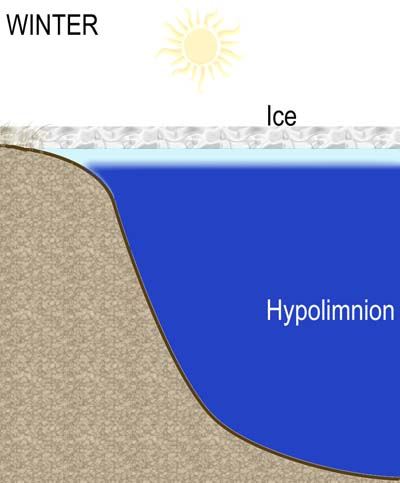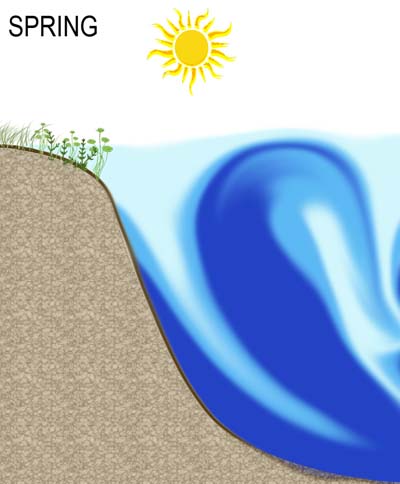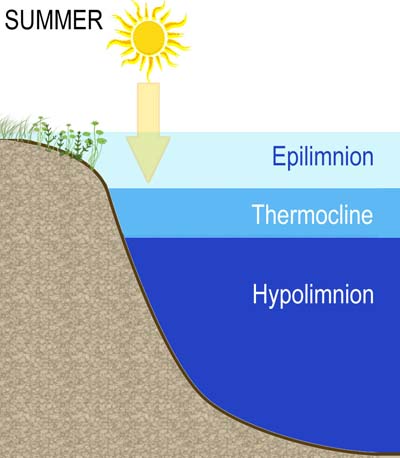


Spring turnover in our lakes
We are now near to the summer
season on our lakes again. This
marks the fourth installment of my lake stratification (layers) and mixing
articles. Once the ice melts off
the lake, the lake goes through another period of mixing like it did back in the
fall.
First, I'll recap the underlying
cause of the lake mixing phenomenon. The
layering of lakes has to do with the relationship between water density and
temperature. Water is most dense at 39
Fahrenheit (4 degrees Celsius), and as water warms or cools from that mark it
gets less dense. This has implications for a lake's structure because the denser
water is heavier and will be at the bottom of a lake while the less dense water
is lighter and will generally be at the top of the lake.
In the winter, most of the water under the ice is 39
Fahrenheit; however, there is a thin layer of water under the ice that is colder
than 39 and therefore less dense. This thin layer of water floats on top of the
lake under the ice throughout the winter.
In the spring in



As nutrients are available at
the surface of the water again and the sun gets stronger, the first algae are
able to grow. In May the water may
look somewhat brownish, which is due to the type of algae that grows at that
time of year. The earliest algae
are called diatoms, and they have more of a brownish color than a green color.
In the winter, the fish go where there is oxygen in the lake. That usually means the deeper spots. As the lake turns over and plants start growing in the shallow areas again, they add oxygen to the water through photosynthesis and provide cover for fish from predators. The fish then begin returning to shallow water.
The timing and duration of spring turnover depends on the size and depth of the lake. As the weather becomes warmer in late May, the surface water warms again and begins to float on top of the cold deeper water. Once the lake begins to form into layers, summer stratification (layering) has begun.
You can track
spring turnover in an individual lake with a Secchi disk.
A Secchi disk measures water clarity.
During spring turnover, the clarity of a lake usually decreases because
mixing brings up nutrient rich water from the bottom of the lake and causes the
lake to look cloudy. Also, the
algae start growing due to the available nutrients, which decreases water
clarity. Then, when turnover is
complete, the clarity increases. If
you take Secchi disk readings and surface water temperature readings every few
days in May and early June, you can track spring turnover.
Most lakes in northern
You can read my past articles on lake mixing at:
http://www.rmbel.info/Reports/Static/Publications.aspx
Until next week, enjoy the lakes!